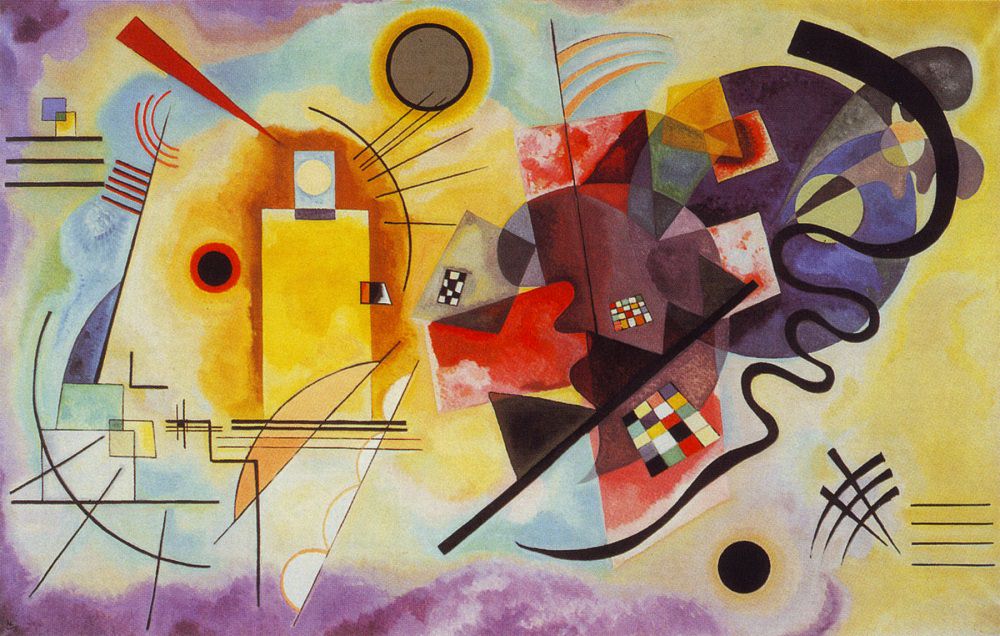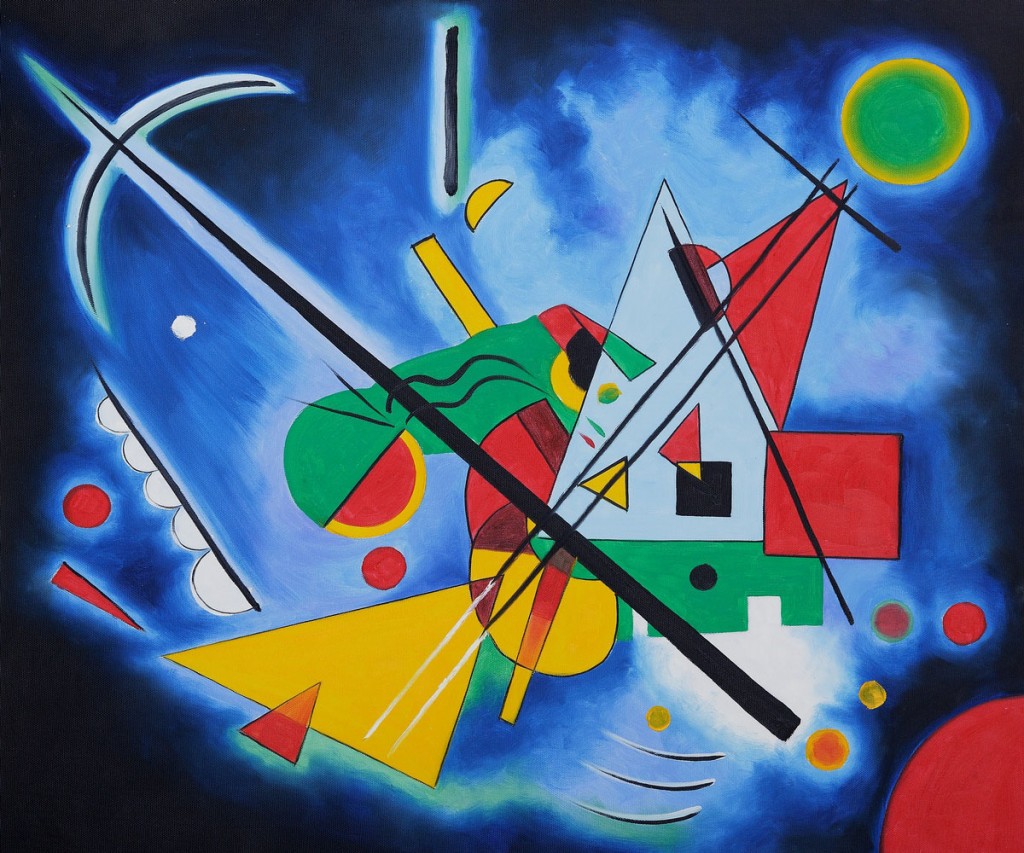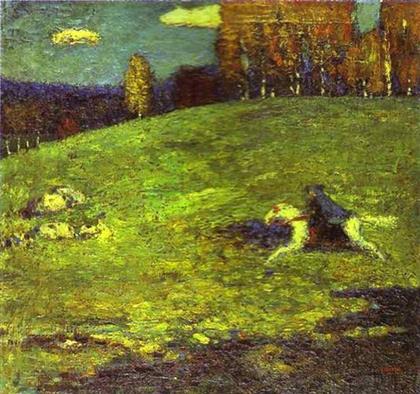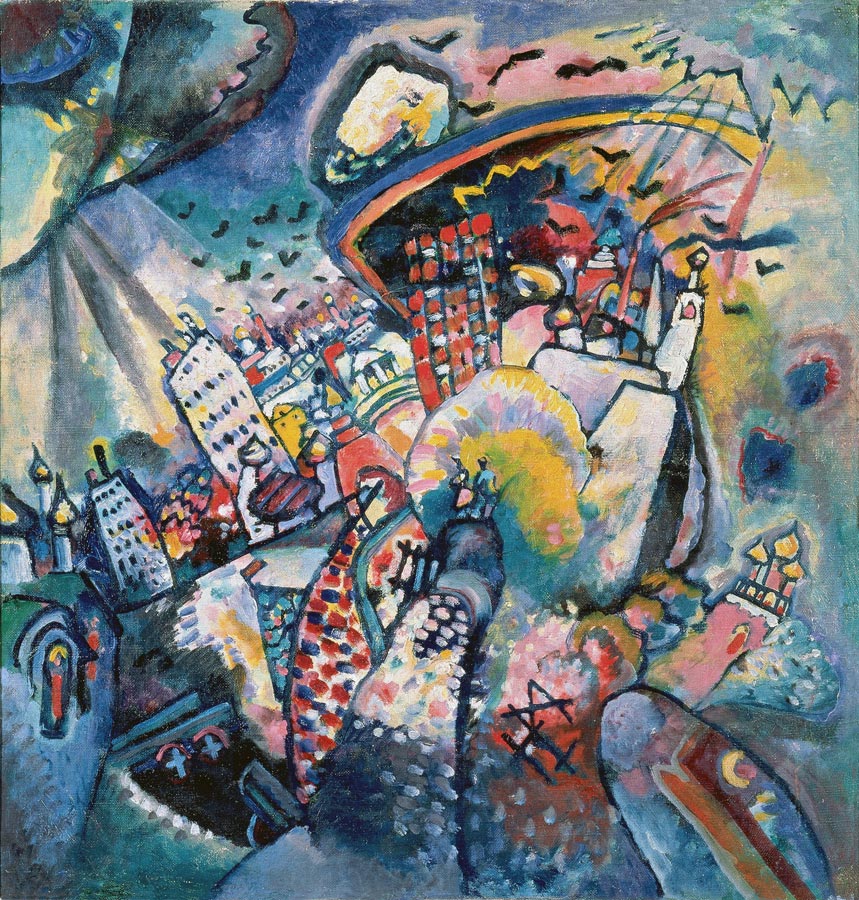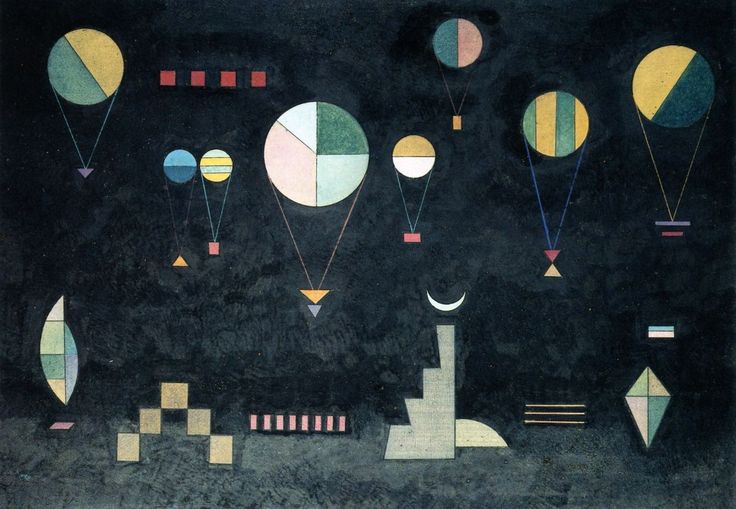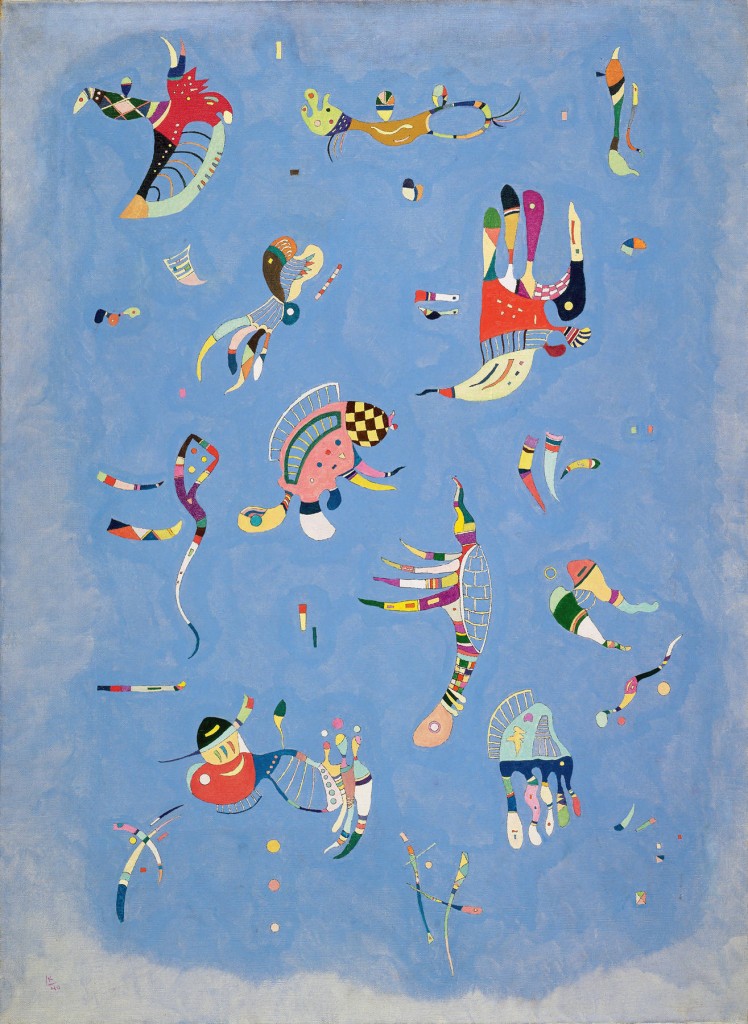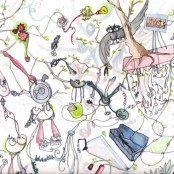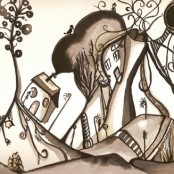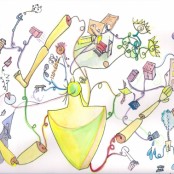Cibeles Center, in Madrid, hosts until next February 28th the biggest retrospective exhibition held in Spain of Kandinsky, he was pioneer of abstract art, and one of the most important avant-garde painters of all the times. The exhibition covers four decades of artistic and spiritual evolution of the Russian painter, from his unsuccessful first attempt of entrance to the Art School of Munich at the end of XIX (moved by Claude Monet´s impressionist paintings exposed in Moscow in 1896 as well as by the Wagner Lohengrin´s opera) to his last creative phase in France.
Kandinsky, versatile man and with a natural curiosity left his careers of Law and Economics with the purpose to travel to Germany, he will be remembered by his avant-garde and spiritual concerns, in a prolific and spotless work summarized in a hundred of paintings, drawings and photos transferred by Pompidou Center in Paris, depositary of the personal collection of the artist after his widower´s Nina donation.
The exhibition runs through four stages and eight rooms his eventful and rich artistic and spiritual life.
Munich, 1896 – 1914
As he wasn´t admitted in the first instance in the Art Academy in Munich, he started painting as an autodidact, his influences around this stage were Monet, Wagner and Helena Blavatsky. His first creative concerns based on fauvism´s technique were impressionistic paintings and very colourful works inspired on the German mythology and in the ancient life of the Tsarist Russia. The most important painting of this stage is “The blue rider”. The same name was used by Kandinsky and other artists to call the movement that changed the German expressionism and lasted until the outbreak of the Great War.
El jinete azul , Wassily Kandinsky
Back to Russia, 1914 – 1921
Kandinsky developed his theoretical and teaching method working for the Bolshevik Revolution. He hardly painted in this stage since he was involved in developing culture institutions. Kandinsky was rejected by his spiritual Expressionism, so he left Moscow and came back to Germany in 1921 invited by the architect Walter Gropius (the Bauhaus founder). The abstraction burst into his work and this is perfectly reflected in his masterpiece “Red square” (1916).
Red square, Wassily Kandinsky
Bauhaus, 1921 – 1933
The following destination of Kandinsky was Staatliche Bauhaus (the legendary Art School founded in 1919) and closed by the Nazis in 1933, because they considered it subversive and very little adjusted to the Prussian conservatism. It was a prolific stage, where he alternated theoretical with practical teaching and geometry and shapes acquired great significance. This modus operandi was embodied in his second book “Point and line to plane” 1926. “Shallow deep” (1930) was one of the more distinctive paintings of this stage.
Shallow deep, Wassily Kandinsky
Paris, 1933 – 1944
Kandinsky was influenced by Picasso as well as by Dali, Arp or Miró. His paintings are plentiful of microscopic forms, abyssal creatures, amoebas, insects. He created an inner world with the purpose of running away from horrors of the 2nd World War. During this stage there is a big synthesis of all his previous works, and we can appreciate his evolution from geometry to surrealism captured in all his magnificence in his last two works “Composition IX and X” and “Blue sky” (1940).
Blue, Wassily Kandinsky
——————————–
Watercolors by Soraya Estefana at shop. Click on pictures to see files
